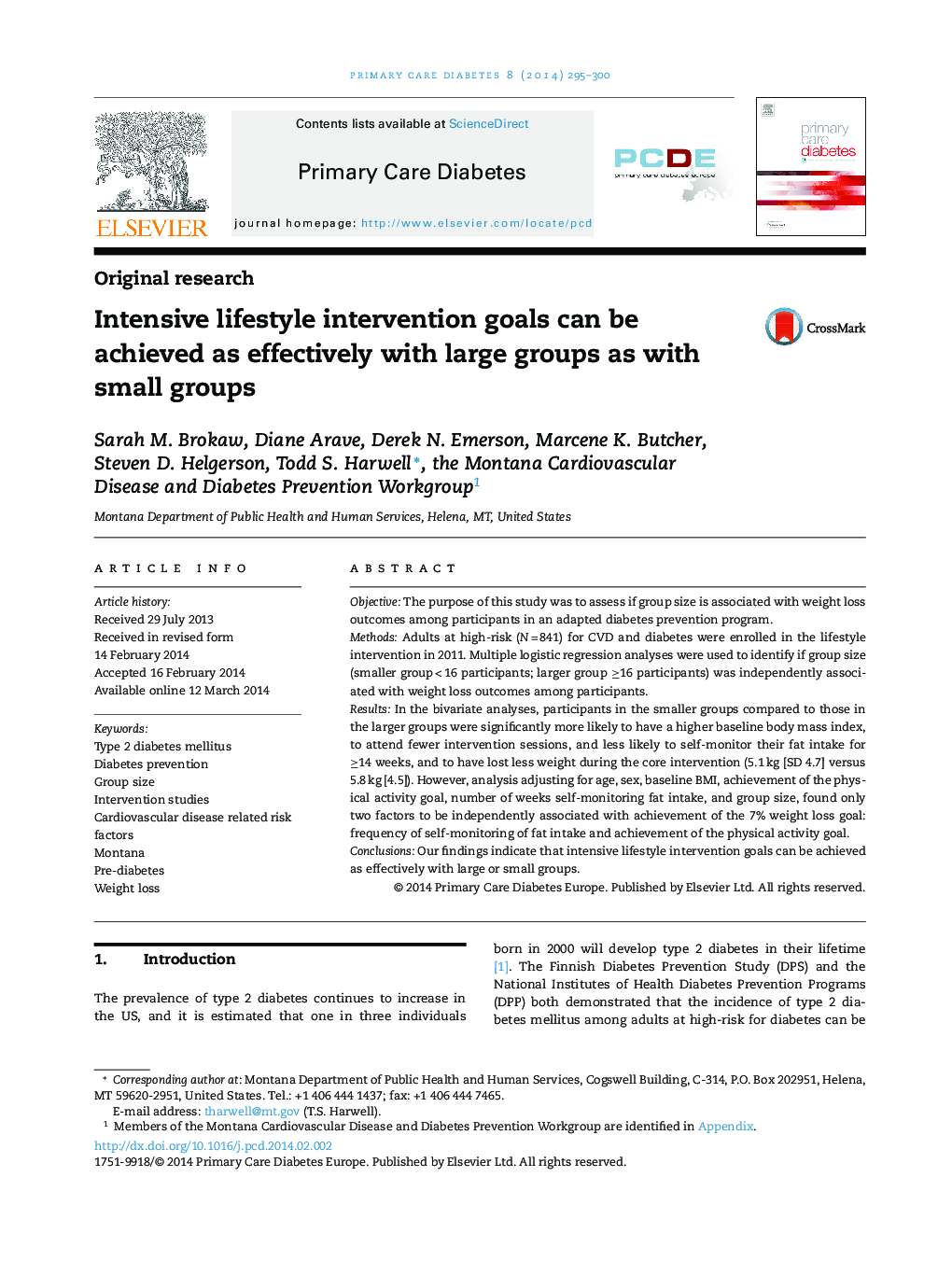| Article ID | Journal | Published Year | Pages | File Type |
|---|---|---|---|---|
| 2678914 | Primary Care Diabetes | 2014 | 6 Pages |
ObjectiveThe purpose of this study was to assess if group size is associated with weight loss outcomes among participants in an adapted diabetes prevention program.MethodsAdults at high-risk (N = 841) for CVD and diabetes were enrolled in the lifestyle intervention in 2011. Multiple logistic regression analyses were used to identify if group size (smaller group < 16 participants; larger group ≥16 participants) was independently associated with weight loss outcomes among participants.ResultsIn the bivariate analyses, participants in the smaller groups compared to those in the larger groups were significantly more likely to have a higher baseline body mass index, to attend fewer intervention sessions, and less likely to self-monitor their fat intake for ≥14 weeks, and to have lost less weight during the core intervention (5.1 kg [SD 4.7] versus 5.8 kg [4.5]). However, analysis adjusting for age, sex, baseline BMI, achievement of the physical activity goal, number of weeks self-monitoring fat intake, and group size, found only two factors to be independently associated with achievement of the 7% weight loss goal: frequency of self-monitoring of fat intake and achievement of the physical activity goal.ConclusionsOur findings indicate that intensive lifestyle intervention goals can be achieved as effectively with large or small groups.
